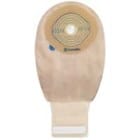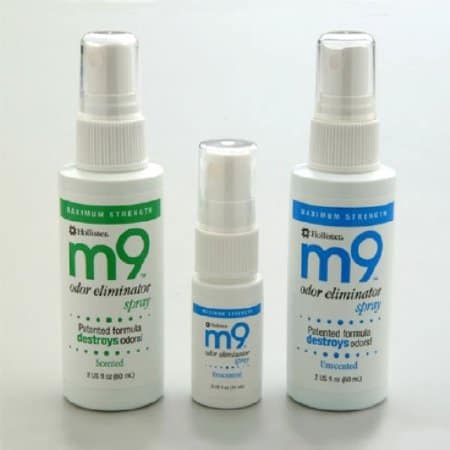Discovering that you need ostomy surgery can be frightening and stressful. Having some research under your belt and having the right ostomy supplies for your stoma type and lifestyle can make a significant difference in the quality of your life. We’ve made it easy for you by providing helpful information, product recommendations, and tips to help navigate your journey with an ostomy. Ostomies are lifesavers, so we hope we can be a part of helping you live your best life.
Why Ostomy Surgery May Be Needed
When the urinary or digestive system is malfunctioning, a temporary or permanent ostomy may be needed to allow urine or stool to exit the body through an alternate route. The surgeon will take a piece of either the ureter, small intestine (ilea), or large intestine (colon) and form a new opening on the abdomen (stoma), diverting urine or feces into an ostomy pouch.
There are various medical conditions such as bladder cancer, inflammatory bowel disease, and urinary or stool incontinence, to name a few, that may result in ostomy surgery. There are three types of ostomy surgeries. Some of the different causes for the type of ostomy surgery needed are:
Causes for a colostomy
- Rectal or colon cancer
- Inflammatory bowel disease (IBD), including Crohn’s disease or ulcerative colitis
- Stool incontinence
- After an operation to allow the large intestine to heal (temporary)
Causes for an ileostomy
- Chrohn’s disease
- Diverticulitis
- Ulcerative Colitis
- When the large intestine is damaged or removed due to cancer or injury
- After an operation to allow the large intestine to heal (temporary)
Causes for a urostomy
- Bladder removal due to injury or bladder cancer
- Severe kidney disease
- Urinary incontinence
- Surgical complications from abdominal or pelvic surgery
Ostomy Supplies Needed After Ostomy Surgery
Depending on the type of ostomy surgery you have, there are a wide variety of supplies that you will need to keep your perineal skin healthy and remain comfortable. Aside from the ostomy pouching system consisting of a pouch and skin barrier, other ostomy supplies can make life with an ostomy more manageable.
Know that you have choices when it comes to your ostomy supplies. You may have been sent home with a specific style of pouching system, but you are not bound to those ostomy products. Ostomy pouches and supplies have come a long way from the 1920s. Your stoma size and shape will change over time, and that means you will require different ostomy supplies.
What to Eat and Drink After Ostomy Surgery
Discuss food preferences and dietary restrictions with your surgeon before discharge from the hospital after ostomy surgery. It may take some time to regain your appetite after ostomy surgery since your gut will need to recover from the trauma. Some foods and beverages may affect your digestive tract differently than before, causing you to produce excess gas, diarrhea, urine odor, or constipation. It may be helpful to introduce foods and beverages slowly to determine how they will affect you.
Tips for reintroducing foods and beverages after ostomy surgery:
- Eat small meals throughout the day
- Chewing all foods thoroughly and slowly will aid digestion
- Drink plenty of water
- Limit bowel stimulants for a bit, including coffee, fruit, cereals, and alcohol
- Avoid fizzy drinks that may cause diarrhea and gas
Once your appetite has returned and your stoma output has become more regular, introducing more vegetables, fruits, proteins, dairy, and grains will help with a balanced diet.
When to Resume Activities After Ostomy Surgery
Once you’ve healed from ostomy surgery, your healthcare professional will let you know if you’re ready to start getting active again. Even when living with an ostomy, you can still participate in many sports, including swimming. Many water-resistant ostomy supplies such as Convatec ease strips can help keep the skin barrier in place for added security.
Again, check with your doctor before attempting to resume physical activity, especially sports or strenuous activities like lifting weights. However, once you’ve healed and gotten clearance from your healthcare professional, an ostomy accessory such as an abdominal ostomy support belt may be recommended to help keep your ostomy pouch secure.
Contact sports such as wrestling, boxing, and football should be avoided because of possible injury to the stoma. Make sure to check with your doctor or nurse before attempting these activities.
What about being intimate?
Ostomy surgery changes your body and may affect how sensitive you might feel about being intimate with your partner. Just because you have an ostomy, it doesn’t mean that your sex life has to come to an end. Maintaining meaningful and fulfilling intimate encounters can still be part of you and your life.
Ostomy supplies such as a stoma cap allow for a more discreet feel that is also less prone to getting in the way or caught on fabric. Convatec has provided some helpful intimacy tips for those with an ostomy here.
Traveling After Ostomy Surgery
You can most definitely travel after healing from your ostomy surgery. The key is to prepare yourself with enough ostomy supplies. If you are traveling by car, plan your route ahead of time, so you know where there are accessible restrooms along the way. If you travel by air, try seating yourself in an exit aisle and close to the bathroom. You will avoid having to maneuver around other passengers and gain access to the facilities quicker.
 Make sure to pack these suggested ostomy supplies when traveling:
Make sure to pack these suggested ostomy supplies when traveling:
- Double the amount of ostomy pouches you would typically use in case of accidents
- Consider taking some drainable pouches if you regularly use closed-end pouches. Drainable pouches allow for easier and quicker emptying on the go.
- Skin barriers
- Adhesive and adhesive remover
- Stoma powder
- Personal wipes and washcloths
- Underpads/bed pads/chux
- Disposable trash bags
- Ostomy deodorant
- Hand sanitizer
- Spare clothes
It would be wise to double up on everything in the event you get caught in traffic, or your flight is delayed. When traveling by plane, remember to take all of your ostomy supplies with you in your carry-on bag. You will then have full access when you need them most.
Where to Purchase Ostomy Supplies
With the right ostomy supplies and products, you can get back to living the life you enjoy. At Personally Delivered, we offer high-quality, affordable ostomy supplies from respected and trustworthy manufacturers like Convatec, Coloplast, Hollister, and more. With guidance from our knowledgeable and compassionate team of Product Advisors, you will be adjusting to life with an ostomy in no time.
We are available Monday through Friday from 9:00 am to 5:30 pm EST at 800-777-1111, or you can email us at CustomerService@PersonallyDelivered.com any time.


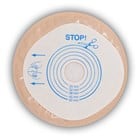
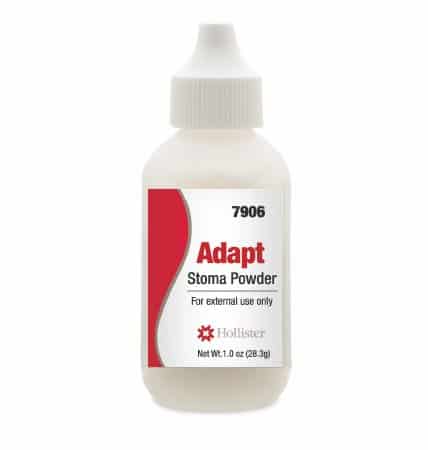
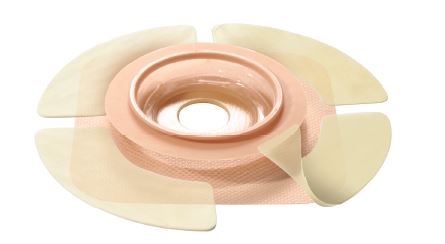
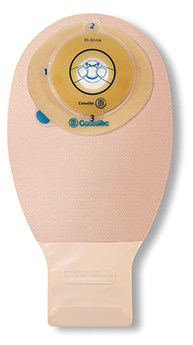


 In addition to skin folds and stoma protection, the size of the stoma is an important factor in getting the right fit for your ostomy skin barrier. Ensuring that the barrier is the proper size may help prevent leakage. 1-2mm larger than the stoma is suggested for a close fit. The
In addition to skin folds and stoma protection, the size of the stoma is an important factor in getting the right fit for your ostomy skin barrier. Ensuring that the barrier is the proper size may help prevent leakage. 1-2mm larger than the stoma is suggested for a close fit. The 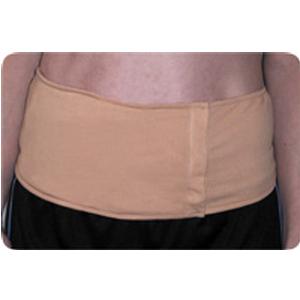 Too Much Pressure Around the Stoma
Too Much Pressure Around the Stoma
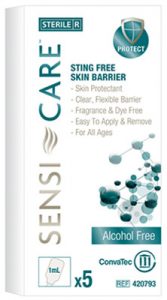 By maintaining a good skin care routine, you can help prevent peristomal skin irritations from forming. These are some simple steps you can take:
By maintaining a good skin care routine, you can help prevent peristomal skin irritations from forming. These are some simple steps you can take:

 When an ileostomy is performed, the lowest part of the small intestine is disconnected from the large intestine and rerouted to the abdominal wall to form a stoma. This procedure can also be temporary when surgery was performed on part of the large intestine and this allows it to rest for a bit. An ileostomy may be permanent if the large intestine and rectum have been removed due to disease.
When an ileostomy is performed, the lowest part of the small intestine is disconnected from the large intestine and rerouted to the abdominal wall to form a stoma. This procedure can also be temporary when surgery was performed on part of the large intestine and this allows it to rest for a bit. An ileostomy may be permanent if the large intestine and rectum have been removed due to disease. When a person has bladder cancer, a birth defect, or a serious spinal cord injury, a urostomy may be necessary due to the bladder either not functioning normally or having to be removed. The ureters are detached from the bladder and then reattached to a small piece of the bowel that has been removed. That piece of the bowel is then attached to the abdominal wall that redirects urine from the kidneys and into a bag.
When a person has bladder cancer, a birth defect, or a serious spinal cord injury, a urostomy may be necessary due to the bladder either not functioning normally or having to be removed. The ureters are detached from the bladder and then reattached to a small piece of the bowel that has been removed. That piece of the bowel is then attached to the abdominal wall that redirects urine from the kidneys and into a bag.